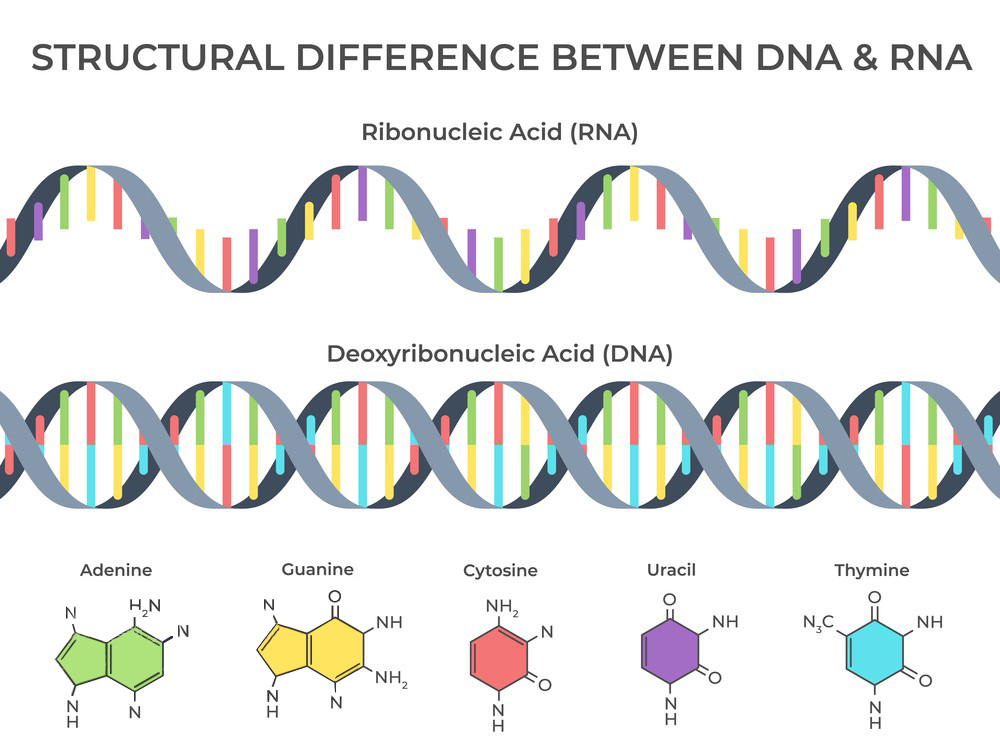Ribonucleic Acid (RNA) is a fundamental molecule in biology, playing crucial roles in various cellular processes. Comprehensive research on RNA covers a wide range of topics, including its structure, function, types, and significance in genetics, molecular biology, and biotechnology. Here is an overview of some key aspects of RNA research:
1.Ribonucleic Acid Structure:
Ribonucleic Acid is a macromolecule composed of nucleotides. It has a single-stranded structure, unlike the double-stranded DNA.
Researchers have extensively studied the various types of RNA, including messenger RNA (mRNA), ribosomal RNA (rRNA), transfer RNA (tRNA), and non-coding RNAs like microRNAs (miRNAs) and long non-coding RNAs (lncRNAs). These RNAs have distinct structures and functions.

2.Ribonucleic Acid Function:
mRNA serves as the template for protein synthesis in a process called translation.
rRNA makes up the ribosomes, which are the cellular machinery for protein synthesis.
tRNA carries amino acids to the ribosome, where they are assembled into proteins.
Non-coding RNAs play various regulatory roles in gene expression, from silencing genes to post-transcriptional regulation.
3.Ribonucleic Acid Splicing:
The discovery of Ribonucleic acid splicing, where non-coding regions (introns) are removed and coding regions (exons) are joined together, was a significant breakthrough in Ribonucleic acid research.
4.Ribonucleic Acid Interference (RNAi):
RNAi is a mechanism through which small Ribonucleic acid molecules, such as miRNAs, can regulate gene expression by degrading or inhibiting translation of specific mRNAs. This has major implications in gene regulation and potential therapeutic applications.
5.Ribonucleic Acid in Genetic Information Flow:
Ribonucleic Acid plays a critical role in the flow of genetic information from DNA to protein. The central dogma of molecular biology outlines this process: DNA → RNA → Protein.
6.Epigenetics and Ribonucleic Acid Modifications:
Ribonucleic Acid molecules can undergo various modifications, such as methylation and pseudouridylation, which can influence gene expression and RNA stability.
7.Ribonucleic Acid in Disease and Therapeutics:
Research on Ribonucleic acid has led to the development of RNA-based therapeutics, including Ribonucleic acid vaccines and gene silencing therapies.
Dysregulation of Ribonucleic acid processing and function is associated with various diseases, including cancer, neurodegenerative disorders, and viral infections.

8.Ribonucleic Acid Sequencing:
Advances in high-throughput Ribonucleic acid sequencing technologies (RNA-Seq) have enabled researchers to study the entire transcriptome of an organism, providing insights into gene expression, alternative splicing, and the discovery of novel RNAs.
9.Evolution of Ribonucleic Acid:
The Ribonucleic acid world hypothesis suggests that Ribonucleic acid may have played a central role in the origin of life, evolving into DNA and proteins. Research in this area explores the early evolution of Ribonucleic acid and its significance in the history of life on Earth.
10.Synthetic Biology and Biotechnology:
Ribonucleic Acid has applications in synthetic biology, where researchers engineer Ribonucleic acid molecules for various purposes, including gene expression control and drug development.
Comprehensive research on Ribonucleic acid is ongoing, and it continues to reveal the multifaceted roles that Ribonucleic acid plays in the cell, as well as its broader implications in fields like medicine and biotechnology. Advances in Ribonucleic acid research have the potential to revolutionize our understanding of biology and lead to innovative therapies and technologies.
